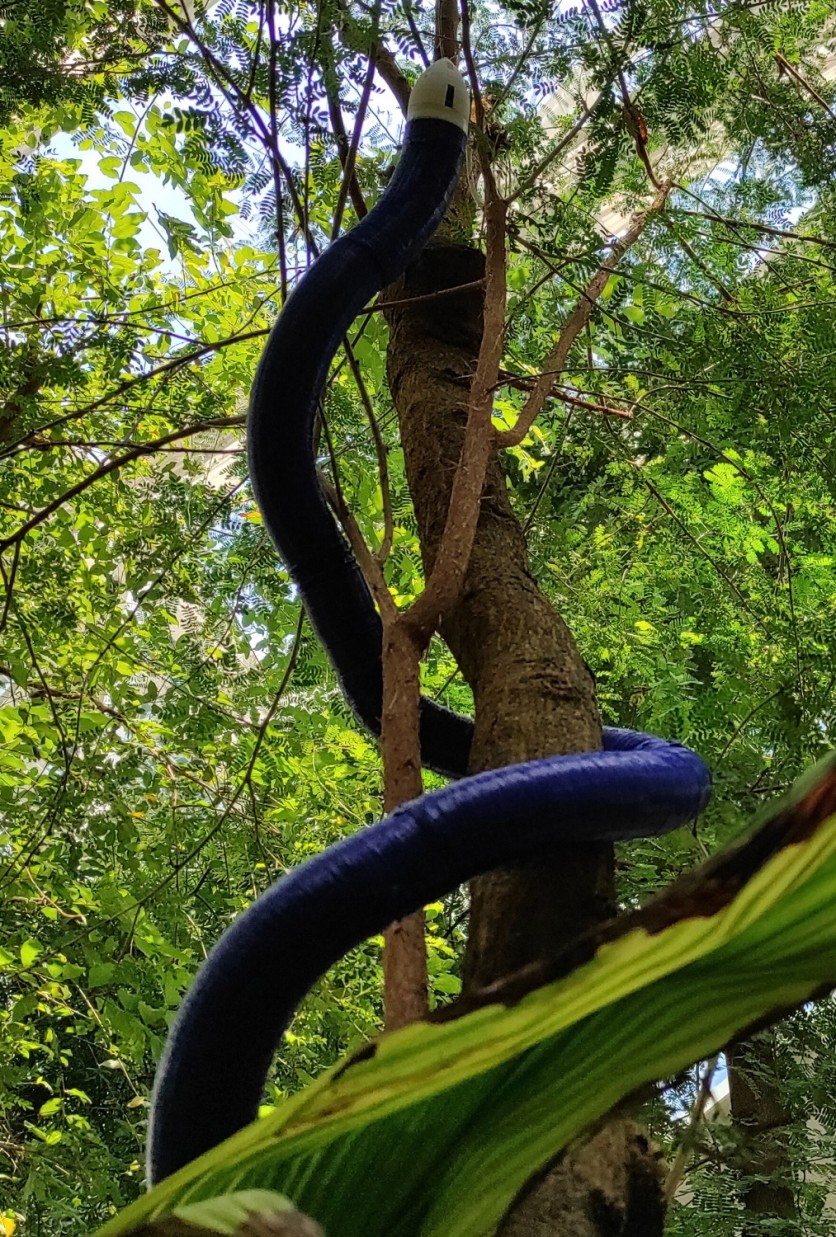Three soft robotics researchers from Fondazione Istituto Italiano di Tecnologia in Italy and the University of Montpellier in France have developed a unique snake-like robot that 3D prints its own body to grow longer at will.
According to TechXplore, the robot named FiloBot, which features a rotating head, resembles a snake in form. While the head spins, it employs 3D printing to generate additional body mass, leading to the elongation of the robot.
Programmed flexibility allows the robot to grow in desired ways, like toward light or against gravity, giving it the ability to grow in a vine-like manner.
"We present an autonomous growing robot that draws inspiration from the behavioral adaptive strategies of climbing plants to navigate unstructured environments. The robot mimics climbing plants' apical shoot to sense and coordinate additive adaptive growth via an embedded additive manufacturing mechanism and a sensorized tip," the researchers wrote.

Snake-Like Robot With a Spinning Head
The robot's spinning head employs 3D printing to generate additional body mass, thereby extending the length of the robot. The intricate design of FiloBot incorporates a tube within its body, facilitating the feeding of the head with 3D printer ink - a specialized plastic material.
The spinning head employs a coiling mechanism, effectively printing additional body material as it rotates. Positioned at the rear of the robot is a base housing the inkwell, a pump, and a power source.
The head also encompasses electronics that interpret signals from external sensors, enabling precise control over the 3D printing process. The printer can adjust its spin rate and ink supply based on sensory input, providing a mechanism for direction control in the growth process.
Read Also : Tiny Soft Robots Designed for Delicate Medical Procedures Are Uniquely Made From Plant-Based Hydrogel
Potential Applications
The team claimed that FiloBot holds diverse potential applications ranging from surveillance and interaction with natural surroundings to constructing independent structures. Its versatility enables it to evaluate landscapes, foreseeing events like avalanches or landslides, and measure pollution levels in remote and hard-to-access areas.
"The robot adapts its material printing parameters to develop a light body and fast growth to twine on supports or a tougher body to enable self-support and cross gaps. These features, typical of climbing plants, highlight a potential for adaptive robots and their on-demand manufacturing," the researchers said.
"They are especially promising for applications in exploring, monitoring, and interacting with unstructured environments or in the autonomous construction of complex infrastructures," they added.
The study focuses on the robot's design and functionality and draws inspiration from climbing plants' adaptive growth strategies. It highlights the robot's ability to navigate complex, unstructured environments by responding to external stimuli like gravity, light, and shade.
FiloBot has an adaptive mechanism that allows it to twine around vertical supports, reduce energy expenditure, and construct structures on demand. The team's findings were published in the journal Science Robotics.
Related Article : This 3D-Printed Soft Robotic Gripper Can Operate Without Electronics - How Does It Work?

ⓒ 2025 TECHTIMES.com All rights reserved. Do not reproduce without permission.




